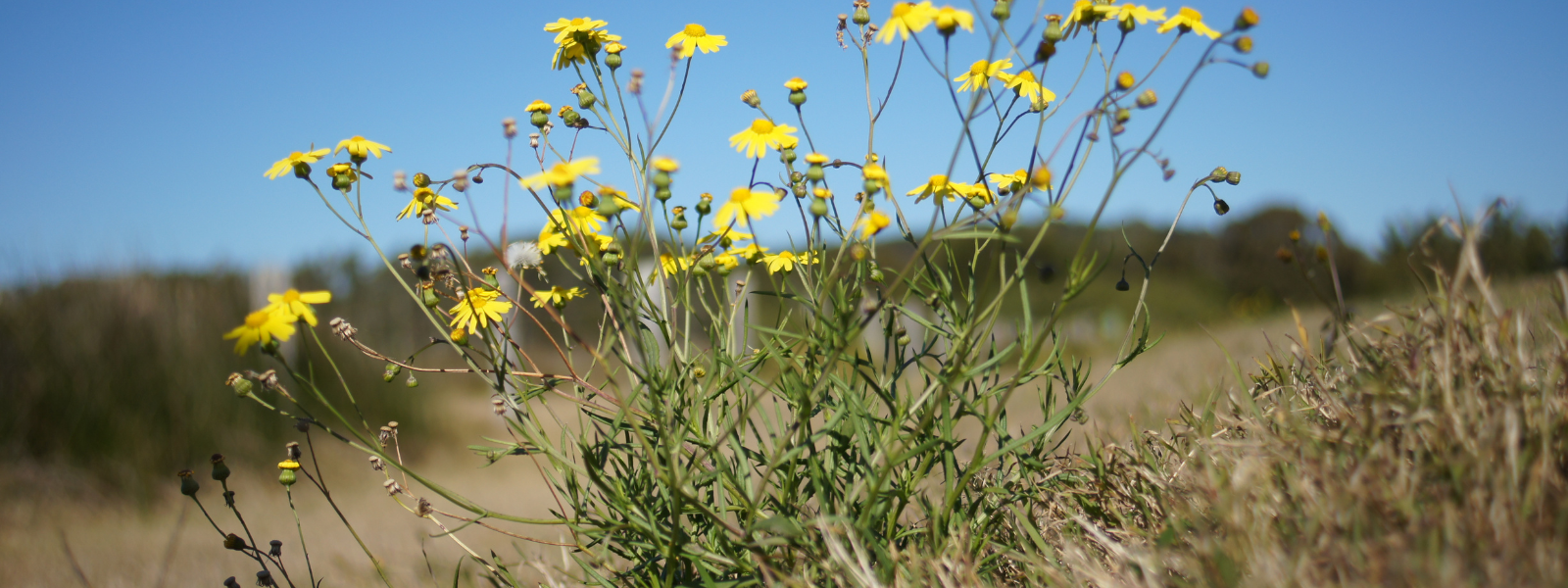
Common Name
Fireweed, Madagascar Ragwort, Madagascar Groundsel, Cape Ivy
Scientific Name
Senecio madagascariensis
Family
Asteraceae
Lifecycle
Perennial
Seasons of Growth
Year-round
Key Distinguishing Feature
Herb with bright yellow daisy-like flowers
-
Growth Form: Fireweed is a low-growing herbaceous plant with a prostrate or ascending growth habit. It often forms dense mats close to the ground.
-
Leaves: The leaves are variable but typically have lobed or deeply toothed margins. They can vary in size and shape.
-
Flowers: The flowers of Fireweed are bright yellow and daisy-like, with ray flowers (petals) and a central disk of tubular flowers. They are borne on solitary stems.
-
Fruit: After flowering, Fireweed produces small achenes (seeds) with a tuft of bristles for wind dispersal.
-
Stems: The stems of Fireweed are typically green, somewhat fleshy, and can become reddish as they age.
Ecological Impact:
-
Fireweed is native to South Africa but has naturalised in various parts of the world, including Australia and the United States. In some regions outside its native range, it can become invasive and negatively impact native ecosystems.
Control Methods:
-
Control measures for Fireweed are typically employed when it is considered invasive and detrimental to native ecosystems or agricultural areas.
-
Mechanical control methods may involve hand-pulling or mowing the plants before they produce seeds to prevent further spread.
-
Herbicides may be used for control, but care must be taken to use them safely and effectively, following local regulations.
-
Preventing the spread of Fireweed through the dispersal of seeds or contaminated soil is essential for management.
Key Products for Control
-
Adama Bronco MA-X - Bromoxynil and MCPA
-
Envu Method - Aminocyclopyrachlor (present as the potassium salt)




